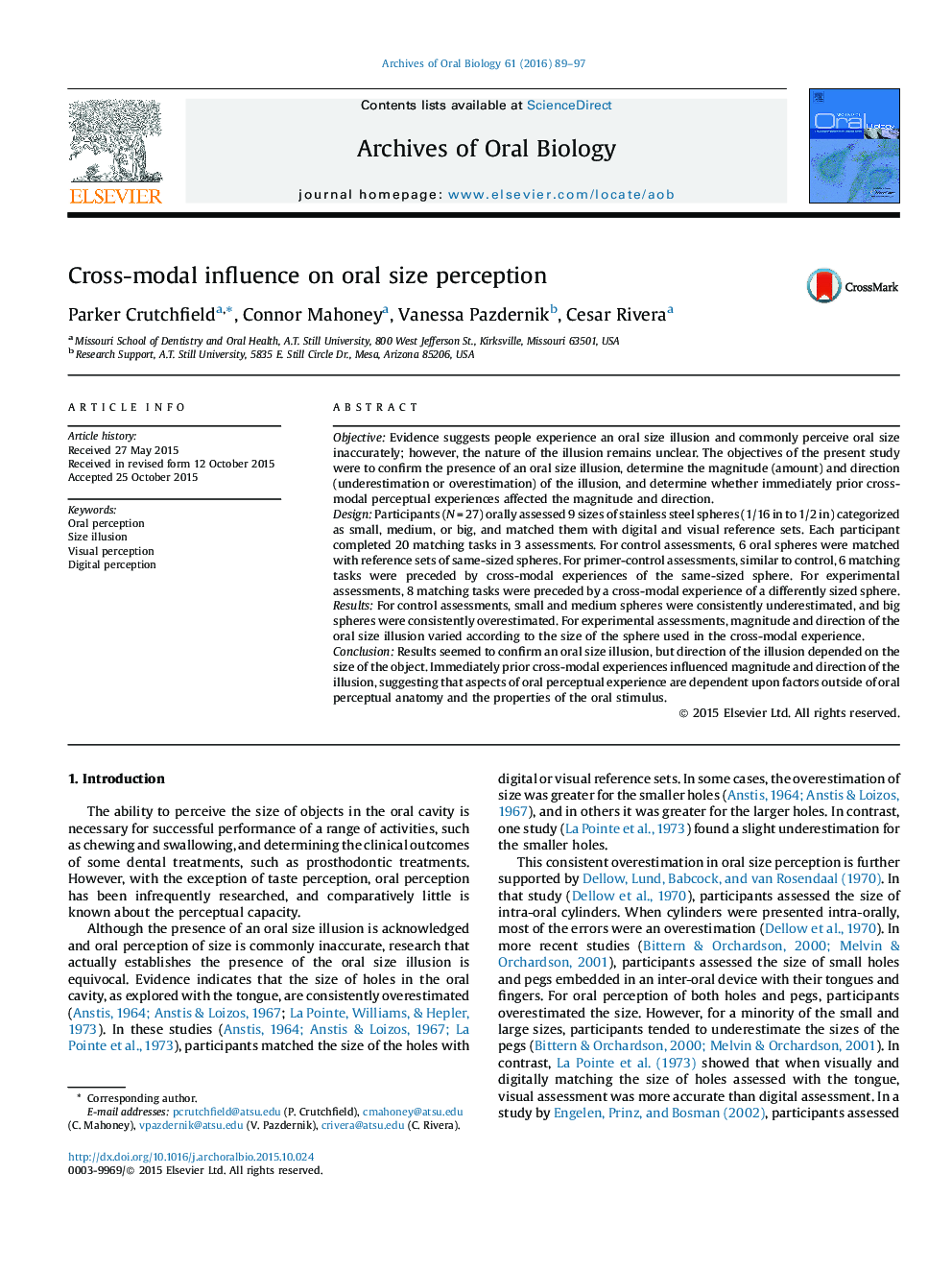| Article ID | Journal | Published Year | Pages | File Type |
|---|---|---|---|---|
| 3120733 | Archives of Oral Biology | 2016 | 9 Pages |
•The oral size illusion manifests as underestimation and overestimation of size.•Underestimation of oral size is more prevalent.•Oral size perception is influenced by prior cross-modal experiences.
ObjectiveEvidence suggests people experience an oral size illusion and commonly perceive oral size inaccurately; however, the nature of the illusion remains unclear. The objectives of the present study were to confirm the presence of an oral size illusion, determine the magnitude (amount) and direction (underestimation or overestimation) of the illusion, and determine whether immediately prior cross-modal perceptual experiences affected the magnitude and direction.DesignParticipants (N = 27) orally assessed 9 sizes of stainless steel spheres (1/16 in to 1/2 in) categorized as small, medium, or big, and matched them with digital and visual reference sets. Each participant completed 20 matching tasks in 3 assessments. For control assessments, 6 oral spheres were matched with reference sets of same-sized spheres. For primer-control assessments, similar to control, 6 matching tasks were preceded by cross-modal experiences of the same-sized sphere. For experimental assessments, 8 matching tasks were preceded by a cross-modal experience of a differently sized sphere.ResultsFor control assessments, small and medium spheres were consistently underestimated, and big spheres were consistently overestimated. For experimental assessments, magnitude and direction of the oral size illusion varied according to the size of the sphere used in the cross-modal experience.ConclusionResults seemed to confirm an oral size illusion, but direction of the illusion depended on the size of the object. Immediately prior cross-modal experiences influenced magnitude and direction of the illusion, suggesting that aspects of oral perceptual experience are dependent upon factors outside of oral perceptual anatomy and the properties of the oral stimulus.
